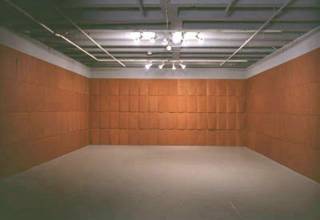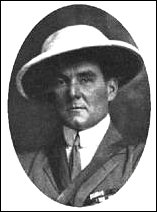
Smells like it too - and the guards hover over you as if you're going to lick it.

The second was the cover article in the Travel Section of the Sunday NYT on luxury spas, specifically, the Spa at Hotel Hershey.
"Leave it to Hershey to make chocolate good for you," the promoters promise, and they intend to prove it. The inhalation room smells of peppermint, as in Patties. In the quiet room overlooking the ornately sculptured grounds, there are pots of hot chocolate to flush out all those toxins.
"Especially for the first-time spagoer, it takes the intimidation factor out of it," says Jennifer Wayland-Smith, the director of the spa. "Everyone loves chocolate, so it's fun to have products applied to your body that look and smell like chocolate. It lightens the feeling for the person who might be uncomfortable being in a room with someone else, and no clothes on."
My boyfriend, Jonathan, a first-time spagoer who has been known to argue that chocolate is a breakfast food, raves about the chocolate hydrotherapy bath, with more than 250 jets pulsing clear Hershey's-scented water. I am somewhat less enthusiastic about the whipped cocoa bath, the only treatment that actually includes real cocoa, which smells inviting, but produces a color of water that in a New York City apartment would signal you to call the super. My massage, however, turns out to be the best I've had - once I've reassured myself that the scent is from cocoa lotion and not Hershey's syrup.
Now, what other food lends itself to a dedicated series on Food TV, is sculpted into impressive artwork, and conjures up images of culinary excess, childhood memories, and sex - all at the same time? Chocolate.
I highlight these impressive cases above because unlike other foods, chocolate - in our culture - has become largely decoupled from its food status. It has a common association with behaviors and memories which easily allow it to be conceptually repackaged into something nonedible which also indexes luxury and other postive attributes. Hence, artists make a statement by making it into an exhibit, French chocolate makers construct sculptures with chocolate, and chocolate or other Theobroma cacao - based products are used in luxury spas in lieu of mud or chemicals. You can construct a corn palace with maiz, toss tortillas at Doo Dah Parade attendees, string popcorn in the Christmas tree, but it is still seen as a food. Chocolate, as it is both imagined and consumed in the physical world, seems to transcend that category, the Mary Douglas border between "food:edible" and "nonfood:inedible," much as champagne is seen as both the excessive epitome of the wine world, and something intangibly different when made into waterfalls, or sipped out of glass slippers.
So the next time you mention chocolate in conversation and the other person rolls their eyes, looks into the heavens, and sways back and forth muttering, "Chocolate...oh, chocolate" as if in a trance, ask youself (and them): Why? When they answer, both of you might begin to see food, customs, and culinary practices in much the same light as an anthropologist does.

No comments:
Post a Comment